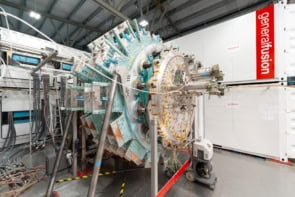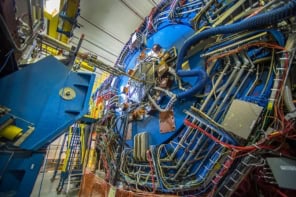Physicists in Italy have shown for the first time that the presence of a Bose-Einstein condensate can trigger the collapse of a 'Fermi gas'. According to Massimo Inguscio and colleagues at the European Laboratory for Nonlinear Spectroscopy in Florence, the interactions between these distinct types of atomic gas could be used to manipulate Fermi gases. The discovery also raises hopes that superfluidity could be seen in a Fermi gas for the first time (G Mudugno et al 2002 Science to appear).
When a gas of ‘bosonic’ atoms is cooled to just above absolute zero, all of the atoms ‘condense’ into the same quantum ground state. Bosons are particles with integer values of spin, and these include atoms that contain an even total number of electrons, protons and neutrons, such as rubidium-87.
But when a gas of fermions is cooled to a similar temperature, the Pauli exclusion principle – which does not affect bosons – stops them all falling into the same quantum state. Instead, the atoms sequentially fill the lowest energy states available, and these atoms strongly repel each other. Fermions have half-integer values of spin, and these include atoms with an odd total number of electrons, protons and neutrons, such as potassium-40.
To probe the interactions that take place between these types of atomic gas, Inguscio and colleagues cooled a mixture of rubidium-87 and potassium-40 gases using a technique known as sympathetic cooling.
As the researchers expected, the potassium atoms formed a Fermi gas when the temperature of the mixture reached 360 nK, and the rubidium atoms formed a Bose-Einstein condensate when the temperature was lowered still further to 240 nK. But the Florence team was surprised to see that – when the Bose-Einstein condensate formed -the number of potassium atoms in the Fermi gas suddenly fell by more than half, and that the escaped atoms collided to create molecules.
According to Inguscio’s team, this phenomenon shows that the strong repulsive interactions between fermions are modified by the presence of the bosons. They believe that bosons could help fermions to pair up in the same way that phonons enable electrons to form Cooper pairs in many superconductors.
The discovery could also help physicists to make a superfluid – a substance that has no viscosity – from a gas of fermions. Superfluidity only emerges in substances that have a large fraction of their atoms in quantum ground states, and has only been seen before in helium and hydrogen.



